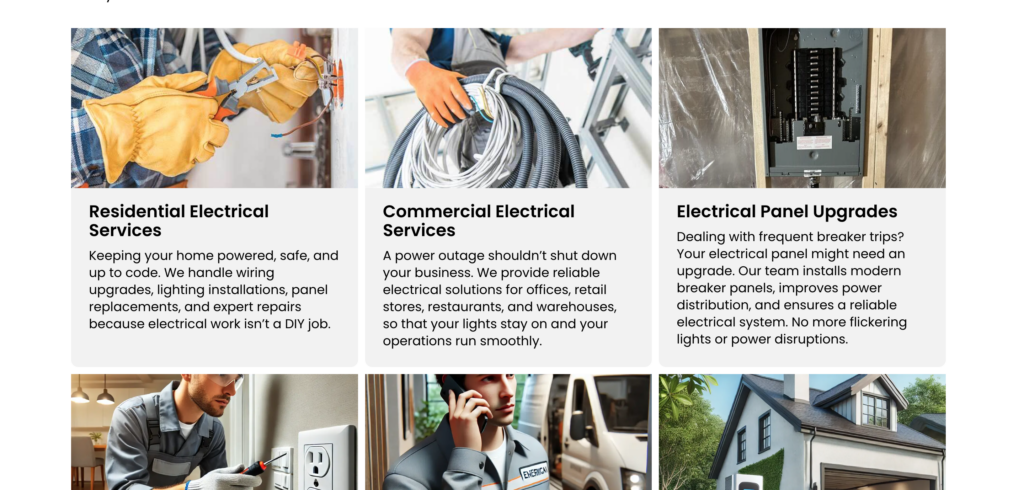Home » Case Studies » White Label2
Untangling Content Cannibalization to Restore Rankings and Conversions

About this White Label Brand
A well-established Canadian company specializing in residential and commercial electrical services, this white-label provider had built a strong industry presence backed by years of on-ground service excellence. With a reputation for professionalism and safety-first solutions, the brand had invested significantly in building a robust content library, particularly through its blog, yet continued to struggle with visibility on generic, high-value search terms.
The Challenge
Despite their authority in the industry and a rich content library, the brand wasn’t ranking on high-intent, generic search queries, the very queries that should have brought them new leads and conversions. Their internal team had conducted multiple reviews of content, backlinks, and keyword usage, but couldn’t pinpoint the core issue. Despite solid domain authority and regular blog publishing, key service pages were not showing up in search results, a red flag for deeper SEO issues.
Our Approach
AdCrowd conducted a comprehensive audit and content mapping exercise that went beyond surface-level checks. What we uncovered was the root of their ranking issues: severe content cannibalization and structural confusion.
Identifying the Overlap: Blog vs. Money Pages
The website had a well-populated blog, but:
• Blog articles and service pages targeted the same keywords.
• Several blogs were ranking in place of high-conversion service pages.
• Google couldn’t differentiate between informational and commercial content.
This meant their most important pages, the ones meant to convert, were being outranked by educational blogs, stealing traffic with lower conversion potential.Strategic Decoupling of Content & Intent
We implemented a semantic restructuring of the site by:
• Clarifying content purpose: Rewriting blog intros and headings to better fit informational intent, while sharpening the commercial tone on service pages.
• Internal linking fixes: Creating clear linking paths from informational blogs to relevant service offerings to guide users toward conversion points.
• Canonicalization and metadata correction to prevent duplicate signals.
•Content pruning: Consolidating overlapping blog posts and removing underperforming pages.Realigning Keyword Strategy
We mapped the blog and service content to unique keyword clusters, ensuring that:
• Service pages owned transactional keywords .
• Blogs were repositioned to rank for long-tail, top-of-funnel terms. This strategic alignment sent clear signals to search engines and improved content discoverability across the funnel.
